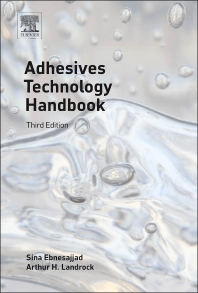WEVO-CHEMIE: Potting Compounds

Customized potting compounds and gap fillers from Wevo enable efficient thermal management for modern inverters, for example (Image source: © chesky – stock.adobe.com via WEVO-CHEMIE).
WEVO-CHEMIE GmbH has developed specially optimized potting compounds and gap fillers which, in addition to targeted heat removal, also ensure the mechanical stability of the component concerned. Due to their low ion content, these epoxy resin- and silicone-based materials not only protect against electrochemical corrosion, they simultaneously provide reliable electrical insulation.
High temperatures occur in the inverters of electric vehicles during the necessary power transformation, for example when driving the motor or recharging the battery by recuperation. Wevo’s specially developed, thermally conductive potting compounds and gap fillers enable reliable protection of what are often highly sensitive components and help prevent component failure due to overheating while at the same time slowing down the ageing process.
To ensure that even the smallest gaps can be filled despite the high thermal conductivity and the high filler content of the potting compounds, Wevo has optimized the flow properties of its epoxy resin and silicone potting compounds. Furthermore, in the interests of a low-VOC production process, cyclic siloxanes have been dispensed with in all silicone-based products – meaning no volatile components are outgassed.
By adapting the glass transition temperature and using special fillers, the materials are made resistant to the –40 °C to +180 °C temperatures prevailing in the inverter in continuous use – even thermal shocks, thermal cycles and damp-heat storage are therefore possible without any risk of cracking. Stresses caused by temperature-related expansion are likewise reduced on account of the customized material properties. Wevo adjusts the flexibility of the potting compounds individually for this purpose, so that sensitive components like the solder joints on printed circuit boards are optimally protected.
Mechanical stresses such as impacts, shocks and vibration are damped by the materials too. If required, the epoxy resin products in particular can be employed to increase a component’s mechanical stability.
Wevo’s development engineers have additionally optimized the adhesion of the silicones to metals such as aluminum. The potting compounds can consequently be used, for example, in the area around the component housing or for components such as coils or printed circuit boards. Furthermore, all products have a low ion content, meaning they provide effective protection against electrochemical corrosion – coupled with reliable electrical insulation.
If full encapsulation of the inverter is not possible or not desirable, a local connection can be established to the component housing or the cooling system using gap fillers developed by Wevo. Heat loss from individual components is reliably dissipated in this way. Apart from high, customizable thermal conductivity, the silicone-based materials offer optimized stability and hence good applicability as beads, for instance. The automated application of the material is followed by pressing together with the component housing. The customized adhesion between the gap filler and the substrate paves the way for long-lasting basic adhesion and makes it easier to remove the material again at the end of its life cycle.
Since their properties can be optimized to meet the requirements of specific applications, Wevo’s potting compounds and gap fillers are also suitable for use in ECUs (electronic control units) or in DC/DC converters.
Learn more at www.wevo-chemie.de/en/.
Looking for a reprint of this article?
From high-res PDFs to custom plaques, order your copy today!








